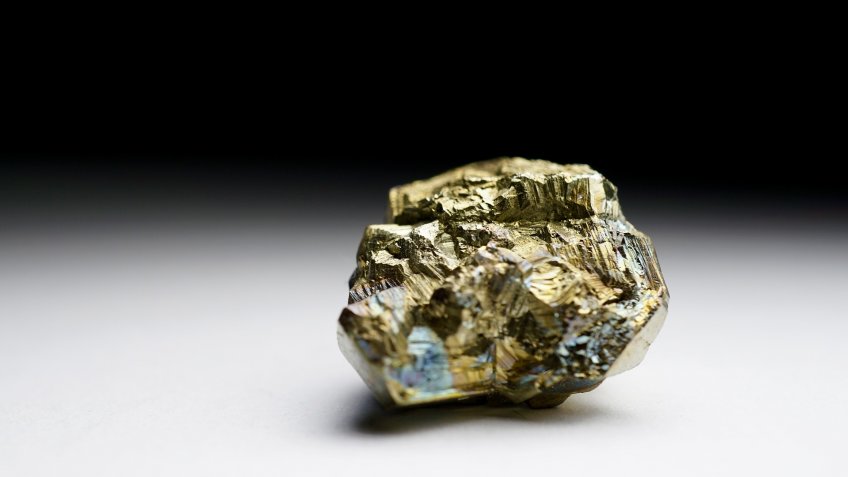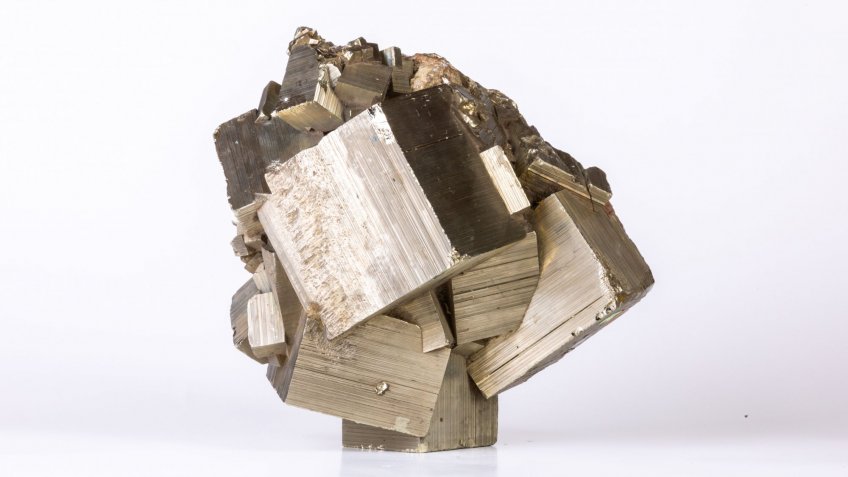
Throughout the history, people's attitude towards minerals has been somewhat mixed. Some stones were believed to be sacred, the others were considered cursed, while the rest were essential to our very existence. The mineral pyrite falls into the last category. Though the glory days of this stone are long gone, some 200 years ago there was almost no other way to light the fire but to use pyrite or flint as the "matches". From a distance, pyrite stone may be mistaken for the gold nugget. As a matter of fact, due to its unique resemblance to the precious metal, a few centuries ago pyrite was also given another name - "fool's gold". However, the official scientific name of the mineral is owing to its specific properties, such as being able to sparkle upon impact. In Greek, pyrite may be translated as "a stone that strikes fire”.
Another unofficial name of the mineral is "Inca stone". This name was also given to pyrite for a reason. During the colonisation of the Americas, Spanish conquistadors and gold diggers, who often lacked literacy, either mined or took away cube pyrites from the locals, believing that those were the precious stones. These rocks were then exported to Europe. For a long time, it was believed that London’s pavements were laid out with precious metal, brought to the country by a famous pirate Martin Frobisher. When it was finally revealed that it was all lies and paved roads were made of pyrite, the English seaman was at the brink of going to a jail. However, it is not the end of the story. In times of the Alaska Gold Rush, the owners of supposedly gold mines were also using pyrite - this time to convince potential investors to buy into the mining profitability. Once these people realised the true value of the purchase, they were mostly ending their lives in suicides.
Ancient Mexicans were making mirrors from the ideally polished facets of pyrite. According to their beliefs, those mirrors were able to show the future and fulfil the wishes. In France, pyrite was considered a symbol of courage and patriotism. During the Napoleonic wars, women sacrificed their gold jewellery to the local army. In return, they secured a piece of pyrite, which they wore as a talisman. Roman legionaries and Greek soldiers had such a strong faith in the protective power of the stone that they often did not value enough their own lives and got killed whilst performing extraordinary feats. As a protective amulet, it is recommended to wear pyrite to those whose lives are at the constant risk of accidental death, such as policemen, firefighters, rescuers.
Pyrite is a men’s stone. It is believed to increase sexual attractiveness, potency and libido. At the same time, because of its powerful energy, the stone is able to cause mental disorders, if worn constantly. Therefore, contacting this mineral is recommended not more than once a week. In ancient times, people used to tie pyrite to the body, for they believed it would relieve the pain. Birth giving women also admitted contractions being a lot less painful if the mineral was nearby. In China, there was a belief that pyrite figurines attract money if positioned near the window and safeguard the room if placed next to the door.
There are almost no places on Earth free of pyrite - it is the most widespread mineral in its class. In nature, this mineral may take a form of beautiful cubic crystals with definitive shading on the faces. However, truly unique samples are rarely found. The largest and most beautiful crystals are formed by hot underground solutions. These findings are usually the most expensive and obviously the most interesting for mineralogists. Pyrite is also rarely used in jewellery. Nonetheless, this mineral was a fashion item in Medieval Europe. This being said, the stone looked like gold but tarnished rather quickly. In the end, there was no trace left of the former luxury item..
It took a few centuries to shake off the bad reputation of the cheater stone. Scientists have found out that pyrite is a true companion of gold and gold nuggets are often found in the proximity of pyrite. Unfortunately, this rule does not always seem to work, since some types of gold deposits lack pyrite completely.

